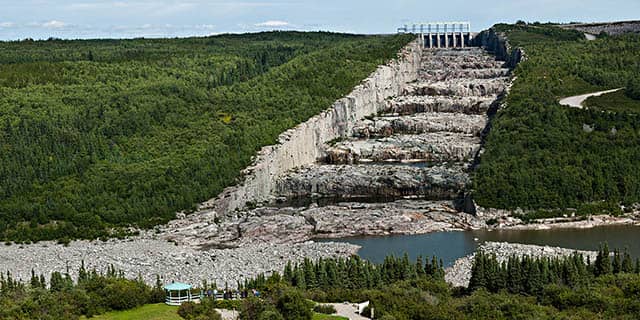
Colossal dimensions
My spillway was designed like a giant staircase to reduce water velocity and prevent erosion. Each of its 10 steps is as big as two football fields and 10 metres high!
Eeyou Istchee Baie-James, QC
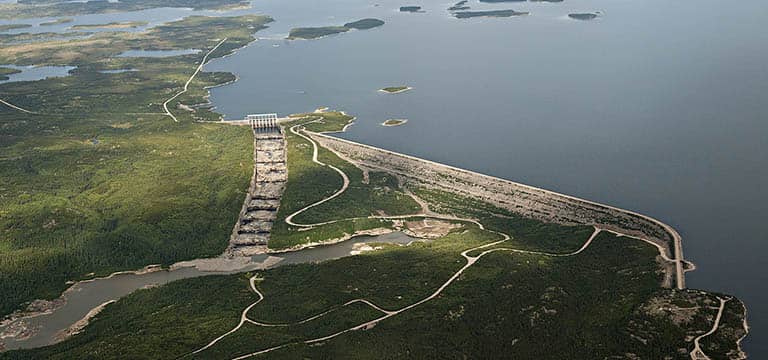
I’m part of the “project of the century,” and it was called that for a good reason! To give you an idea, the La Grande complex generates half the electricity consumed in Québec.
I’m the most powerful underground generating station in the world and Hydro‑Québec’s most powerful. No less!
My spillway is gigantic and my dam is as high as a 53‑storey building. Feeling dizzy yet? As for my reservoir, each of the Earth’s inhabitants could draw 10,000 litres of water from it before it ran dry. Imagine the size!
It was Premier Robert Bourassa who came up with the idea of building the La Grande complex in Baie‑James. That’s why I was renamed the Robert Bourassa generation facility after having been called La Grande‑2 for years.
When humans put their minds to it, they can be quite ingenious. I’m proof of that! If you’re heading for Baie‑James, come see me! I promise you’ll be blown away, and you’ll get to admire awe-inspiring northern landscapes along the way. See you soon!
Have a look at these pictures to get a sneak peek of your guided tour.

My spillway was designed like a giant staircase to reduce water velocity and prevent erosion. Each of its 10 steps is as big as two football fields and 10 metres high!

When the “project of the century” was taking shape, there was no road to get to the construction site. To transport materials, equipment and workers, a 620‑km road was built in the space of three years. A record! It was inaugurated in 1974 and connects Matagami to Radisson. You’ll drive on it to come see me.
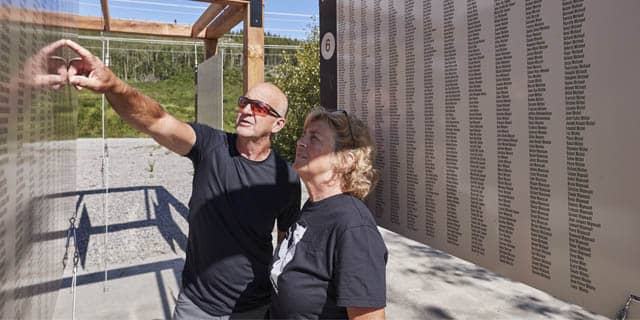
The Parc commémoratif des Bâtisseurs is a tribute to the exceptional contribution of the workers who built northern Québec’s hydropower facility. More than 100,000 names of those who helped build the La Grande complex have been immortalized on panels.
Some images are from the Hydro‑Québec Archives.
Before I became the most powerful underground generating station in the world with my 5,616‑MW capacity, there were those who fervently believed in developing hydropower in Baie‑James. It was a long journey!
1944: First phase of electricity nationalization in Québec
1960: Beginning of the Quiet Revolution in Québec
1963: Second phase of electricity nationalization in Québec
In April 1971, Premier Robert Bourassa launched the “project of the century” in Baie‑James (me!). One year later, the river that would be used was chosen: the La Grande river. It was the beginning of the huge construction sites that resulted in the La Grande complex.
“Never let it be
said that we shall
live like paupers on
a land
this rich”
said
Robert Bourassa,
the
“father of James Bay,”
when he announced the
hydropower megaproject
in Baie‑James
on
April 30, 1971.
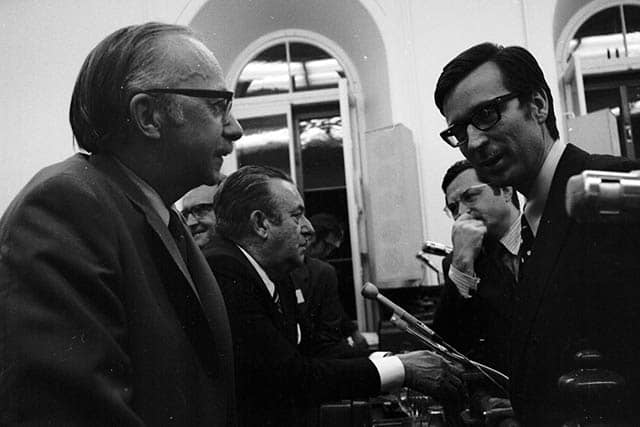
Robert Bourassa and Robert-A. Boyd, President of the Société d’énergie de la Baie James from 1972 to 1976 and President and CEO of Hydro-Québec from 1977 to 1981.
Source: Hydro-Québec Archives
1976: First time the Parti Québécois is elected
Don’t take our word for it: this is what the people who visited the generating station with our guides had to say.
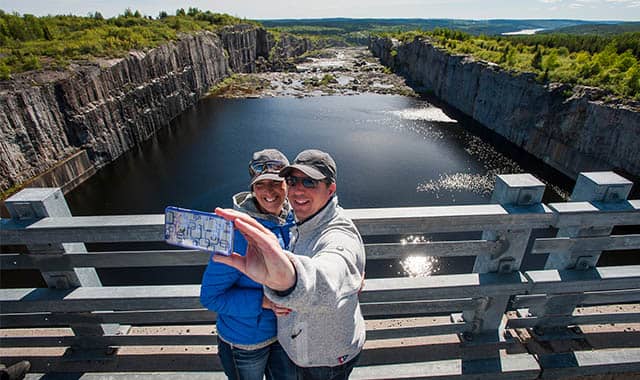
Remarkable, friendly and competent guide who explained things very clearly. She made me want to tour other Hydro‑Québec facilities.
Very interesting and rewarding tour. A lot of information on many subjects related to the generating station.
An extraordinary visit. Bravo!
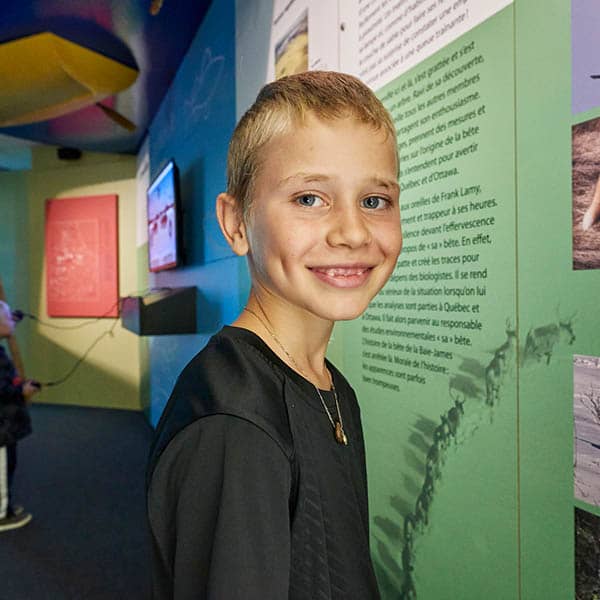
Reservations are required at all times and must be made at least 48 hours in advance.
About four hours
Tours start at set times. Visitors must arrive 15 minutes in advance to sign in.
If the date you would like to visit is less than 48 hours away or if you have special needs (someone in your group wears a pacemaker or has reduced mobility, etc.), please call us at 1 800 291‑8486 1 800 291‑8486.
Given the distance between the Robert‑Bourassa Generating Facility and La Grande‑1 generating station, you cannot visit both in the same day. To visit both facilities, you need to plan to stay at least three days.
Transportation to La Grande‑1 generating station is not included. To get to the tour starting point, you need to drive approximately 1 hour and 15 minutes on a fully paved road.
From September to the end of May
Visits during the week, subject to guide availability. Reservation required 48 hours in advance.
From mid‑June to the end of August
Two tours per week, Thursdays and
Saturdays
Tour begins at 8
a.m.
Reservations required
Looking for original tours featuring science, history and technical know-how? Hydro‑Québec’s got just the ticket!
Check it out!
Robert‑Bourassa Generating
Facility –
Interpretation Center
Complexe Pierre‑Radisson
66, avenue des Groseilliers
Radisson (Québec) J0Y 2X0
Tel.:
1 800 291-84861 800 291-8486
(between 9:30 a.m.
and 4 p.m.)
Get in touch by
email.
For additional information
Free admission
Reservations are required at
all times
and must be made at least
24 hours in advance.
To reserve a free guided tour in
English, please call
1 800 291-84861 800 291-8486.
Get in touch by
email.
Try one of our two rallies while you’re on the premises, either before or after your tour.
It’s easy! Download the Tour Rallies app, choose a rally, then have fun taking the quiz! (Psst! The answers to all the questions can be found in the permanent exhibition at the interpretation center.)
